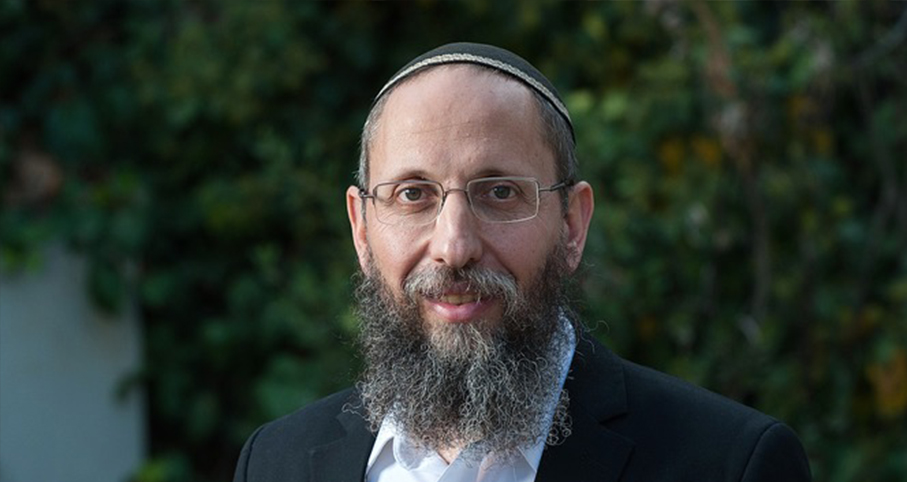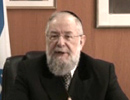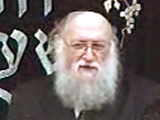Beit Midrash
- Sections
- Chemdat Yamim
- Ein Ayah
Regarding the pasuk, "Benayahu ben Yehoyada, the son of a live man, who was multi-active from Kabtze’el, he smote two Ariels of Moav, and he went down and smote the lion in the midst of the pit on a snowy day" (Shmuel II, 23:20). "Who was multi-active from Kabtze’el" ¬- this means that he increased the number of and gathered Torah activists; "He smote two Ariels" (Rashi- a name that refers to the Beit Hamikdash, as indicated in Yeshaya 59) of Moav (the Beit Hamikdash is attributed to David who descended from Ruth, the Moavite)" - this means that no one in the time of either the first or second Temple was on his level.
Ein Ayah: In the time of the first Beit Hamikdash, there wasn’t sinat chinam (baseless hatred) and the spiritual powers were as "dispersed." On the other hand, it was before the era when the Anshei Knesset Hagedola established the many rabbinical injunctions and institutions, blessings, sanctifications and separations. The multitude of these operative laws established the Torah in the extensive manner we know it today. Thus, the first Beit Hamikdash lacked the multitude of positive actions for which Yehoyada was known.
In the time of the second Beit Hamikdash, religious activities were increased by the Anshei Knesset Hagedola, who put forth many students and made fences for the Torah (the importance of which is stressed in Pirkei Avot 1:2). On the other hand the fence of the sukka of David (i.e., his kingdom) was breached by sinat chinam (Yoma 9b), and thus the lacking was in the gathering of the many activists.
Yehoyada was unique in that he was complete in the greatest possible way in both areas: in increasing religious activities and gathering everyone together. In that way he was unparalleled in the time of the two Temples. It is true that there were great prophets and other righteous people. However, there is no end to shleimut (completeness), and in his shleimut in combining the elements of both needs, no one else was able to reach his level.
The Proper Character of an Innovator
(based on Berachot 3:9)
Gemara:
[We continue to analyze the greatness of Yehoyada] "He went down and smote the lion in the midst of the pit on a snowy day" (Shmuel II, 23:20). Some say that he broke the chunks of ice and immersed [to purify himself]. Some say that he learned Sifra D’bei Rav (Rashi- Torat Kohanim) [one of the hardest areas of Torah study] on an autumn day.
Ein Ayah: This idea in the gemara corresponds to that which was previously stated about increasing activities and gathering them.
In order to increase activities by creating new good and lasting things in the nation in a manner of shleimut, it takes a person who is brave and powerful of soul. He must use his spiritual power, firstly in regard to the way he leads his personal life, which must be with extreme sanctity. Such a person can succeed in innovating good activities, which requires a mighty and brave spirit. Whoever has not reached the pinnacle of that degree of greatness in his personal behavior cannot rise up to lead an entire nation in innovating new practices. [This is hinted at by the matter of purifying himself in icy waters.]
Gathering activities requires exceptional organizational skill. This is hinted at with the study of Torat Kohanim, which has "long branches" and "extensive foliage." He was able to organize them in short, set rules, so that no small detail was lost, in a manner that one could review all of the study in an autumn day [which has few hours of sunlight]. This is a wonderful expression of his ability to organize matters in his spirit, which enabled him not only to create activities but to organize and arrange them in a manner that the Torah could be preserved.

The Need for the Spirit by the Letter of the Law
Various Rabbis | 5769

If You're Not Part of the Solution- You're Part of the Problem
Ein Aya Shabbat 5,25
Rabbi Ari Shvat | Iyar 5783

The National Inheritance of Good Traits
Various Rabbis | 5770

Are Swords Nice or Not?
Various Rabbis | Nisan 27 5778

Various Rabbis
Various Rabbis including those of of Yeshivat Bet El, such as Rabbi Chaim Katz, Rabbi Binyamin Bamberger and Rabbi Yitzchak Greenblat and others.

Moreshet Shaul: A Crown and its Scepter – part II
Based on Siach Shaul, Pirkei Machshava V’Hadracha p. 294-5
Av 5785

Four Prototypes of Service of Hashem
5774

Unfulfilled Raffle Prize – part II
Av 1 5777





















